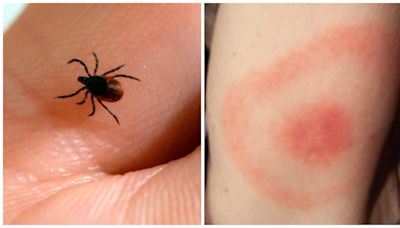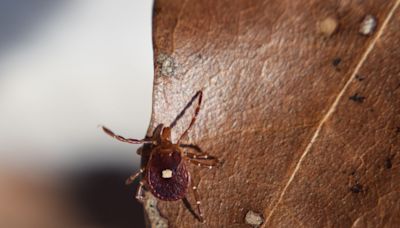Search results
Feb 10, 2023 · If you live where Lyme disease is common, the rash might be enough for a diagnosis. A diagnosis usually depends on the following: A review of all signs and symptoms. A history of known or possible exposure to ticks. Blood tests to find disease-fighting antibodies to the bacteria.
Aug 16, 2022 · What is the outlook for someone with Lyme disease? Most of the people who get Lyme disease and receive treatment early will be fine. Treatment can cure Lyme disease but you might still have some long-term effects. Untreated Lyme disease may contribute to other serious problems but it’s rarely fatal. Post-treatment Lyme disease syndrome
Lyme disease, also known as Lyme borreliosis, is a tick-borne disease caused by species of Borrelia bacteria, transmitted by blood-feeding ticks in the genus Ixodes. The most common sign of infection is an expanding red rash, known as erythema migrans (EM), which appears at the site of the tick bite about a week afterwards.
Consider early Lyme disease with these signs & symptoms. Round expanding red skin lesion usually greater than 2 inches in size. Rash lasts for more than a few days and can be accompanied by flu-like symptoms. Early symptoms can mimic summer flu: fever, achiness, extreme fatigue, severe headache or neck ache.
Lyme disease is most frequently reported from the upper midwestern, northeastern, and mid-Atlantic states where it is spread by Ixodes scapularis ticks. Some cases are also reported from northern California, Oregon, and Washington, where it is spread by Ixodes pacificus ticks. High-incidence states include Connecticut, Delaware, Maine, Maryland ...
Lyme disease is a multi-system bacterial infection which is transmitted to humans through the bite of an infected deer tick. In this Lyme Disease Video Series, Dr. Aucott walks through Lyme Disease including disease overview, signs and symptoms, diagnosis, treatment and prognosis.
Courtesy of Dr. Eva Sapi. Lyme disease is caused by a spirochete—a corkscrew-shaped bacterium called Borrelia burgdorferi. Lyme is called “The Great Imitator,” because its symptoms mimic many other diseases. It can affect any organ of the body, including the brain and nervous system, muscles and joints, and the heart.




